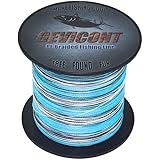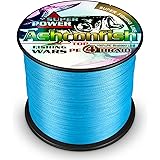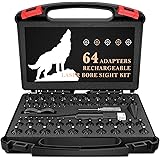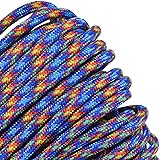Essential Wilderness Survival Skills: Mastering Bushcraft Techniques for Self-Reliance
The act of survival is often seen as a fundamental human desire, a primal urge to continue existing even when confronted by the harshest conditions. It is a concept that extends beyond human experience, observed even in nature where a storm-damaged tree might heal itself and flourish. For humans, however, the challenge is amplified, requiring knowledge and adaptability, much like the famous tale of Robinson Crusoe, who not only survived a tropical island’s harsh environment but thrived by utilizing every available resource.
When the unexpected happens in the wild, knowing how to secure food, create fire, build adequate shelter, and find potable water can be the difference between merely enduring and truly surviving. This article, complementing the video above, delves into numerous wilderness survival tips and bushcraft skills that could prove life-saving. Practical applications of woodland resources are explored, equipping one with vital outdoor knowledge.
The Versatility of Pine: A Bushcraft Powerhouse
Pine, a coniferous tree found extensively across the Northern Hemisphere, is widely known for its uses in manufacturing and carpentry. However, its value in bushcraft and wilderness survival is truly remarkable. From its roots to its sap and needles, every part of a pine tree can be utilized for critical survival tasks.
Crafting Cordage from Pine Roots
Pine roots offer an excellent natural alternative to artificial twine, string, or rope. To access these useful resources, a stick is often used to gently reveal the long, thin roots just below the surface of the ground. Once a root is pulled up, it can be split lengthwise into two by pulling the ends apart; if one side begins to taper, greater pressure is applied to the opposite side to maintain an even split.
This natural pine root cordage proves invaluable for various purposes. It can be employed in the creation of traps, or it can be used to bind branches together for shelter construction. Alternatively, it is ideal for primitive cooking methods, such as securing salmon or chicken to a stick over a fire, as demonstrated in the video with Mike from TIA Outdoors.
A significant advantage of pine cordage is its ability to withstand extremely high temperatures without burning, unlike many modern synthetic cordages. Individual lengths can be braided together, thereby allowing for the creation of longer and stronger pieces suitable for various needs. Impressively, pine root cordage can even be used as a component in friction fire-starting methods.
Fatwood: Nature’s Fire Starter
Speaking of fire, fatwood is essentially the resinous remains of a deceased pine tree. As a pine tree dies, its sticky sap naturally settles into the heartwood of its branches and trunk, where it then hardens and solidifies. This highly flammable material can be found in small branches, the main trunk, or even the decomposed stump of a felled pine tree.
The best fatwood is often discovered in dead, decomposed pine trees, particularly at the junction where a branch meets the main trunk. When searching for it, one should look for a hard, golden-colored core that emits a strong, resinous aroma. To utilize fatwood, fine dust or shavings are scraped from the material, forming a small pile. Hot sparks, produced by striking a fire steel or ferrocerium rod, can then be directed onto this pile, causing it to combust into a long-lasting flame. This makes fatwood an exceptional aid for starting fires, especially on damp days in the woods, or it can be split into kindling to give a fire a substantial boost.
Pine Needle Tea: A Vitamin-Rich Brew
Pine needle tea, prepared by infusing pine needles in freshly boiled water, is not only a refreshing drink but also a powerhouse of nutrients. It is packed with vital nutrients like Vitamin C, which is known to bolster the immune system, and Vitamin A, which supports eyesight, hair, skin, and blood cells. Moreover, each needle contains antioxidants, providing an additional benefit for overall bodily health.
However, a crucial word of caution must be observed: one must be absolutely certain in distinguishing true pine needles from potentially harmful lookalikes, such as yew and other toxic species. A general guideline is to avoid needles that are flat. Furthermore, pine needle tea should be avoided by pregnant individuals.
Pine Cones: A Source of Nutritious Seeds
Within pine cones reside edible nuts, though extracting them presents a small challenge. A traditional method involves collecting the cones and placing them in a warm location, such as near a fireplace or on a heater. As the pine cones dry out, they naturally open up, allowing the seeds to fall out. These highly nutritious seeds are rich in fats, vitamins, and minerals, establishing them as a superb survival food source.
Pine Pitch: Ancient Adhesive for Modern Bushcraft
Pine pitch, a project with a history spanning thousands of years, dates back to prehistoric times and is often referred to as “caveman adhesive.” This versatile substance is created by heating a hardened ball of pitch over a flame, which causes it to melt into a sticky, tar-like adhesive. It can then be applied to various craft projects or primitive tools and weapons.
While several methods exist for making pine pitch, a common recipe involves filling a container with approximately 50% solidified sap (the yellow or white pitch often seen seeping from the tree). To this, 25% dried and crumbled rabbit droppings and 25% powdered charcoal are added. The mixture is then gently heated over a fire and stirred for a minute or two until it achieves a tar-like consistency. As it cools, the mixture will set hard, yet it should still be pliable enough to dent with a fingernail. If the pitch becomes too brittle, it can be re-melted, and a small amount of beeswax can be added to increase its flexibility. This is particularly important for applications such as binding an arrowhead to a shaft, crafting a primitive knife, or even sealing bark on a birch bark canoe.
Pine Needles as Insect Repellent
Returning to pine needles, their utility extends to repelling irritating insects like mosquitoes. Simply crushing some pine needles in the hands and rubbing them over clothing can help deter these pests. Alternatively, burning a small quantity of pine needles in a fire can also keep mosquitoes at bay. By placing a smoldering log upwind of a camp and sprinkling it with pine needles, the aromatic smoke can divert the insects’ attention away from the camp area.
Mastering Fire: Igniting Hope in the Wild
The ability to create fire is a foundational survival skill, achievable through numerous techniques, ranging from striking rocks together or rubbing sticks, to forming a magnifying lens from frozen water. However, understanding the optimal materials and methods is paramount.
Strategic Firewood Gathering and Axe Safety
When gathering firewood, an often-overlooked tip is to look upwards rather than downwards. Wood that is dead but still standing is typically dry and ideal for burning. Conversely, wood lying directly on the ground often contains moisture, resulting in poor combustion and excessive smoke. Adhering to this “look up” principle, one can also gather dead branches that have fallen from the upper canopy and become suspended in lower branches. These suspended branches are frequently wind-dried, providing an excellent source of kindling. Dead suspended pine branches are particularly valuable as their resin content adds extra intensity to the early stages of a fire.
The use of an axe, while essential for processing larger wood, carries inherent dangers in the wilderness. Accidents are prone to occur when full attention is not given, especially when fatigue, wet conditions, or hunger are present. Therefore, maintaining absolute focus is crucial. For instance, when splitting logs to create smaller pieces of kindling, a stick can be used to hold the wood securely in place, allowing the dominant arm to safely swing the axe. This simple technique can effectively prevent severe injury, such as the loss of a finger.
Fire Lighting Fungi and Resinous Sap
Learning to identify specific types of fire lighting fungi can significantly aid in fire starting, particularly on wet or windy days. Fungi such as Horse’s Hoof Fungus (Fomes fomentarius) or King Alfred’s Cake (Daldinia concentrica) possess the remarkable ability to smolder for extended periods, generating considerable heat. Horse’s Hoof Fungus, often found on Beech trees, contains a layer of Amadou, a fire lighting material that has been used for thousands of years, famously found among the possessions of Ötzi the Iceman.
Another incredibly useful fungus, Daldinia concentrica, also known as cramp balls or King Alfred cakes, is frequently discovered on dead or struggling limbs of Ash trees. This fungus can be broken open and used as a coal extender; when a spark is landed upon it, it transforms into a hot, smoldering amber. This amber can then be carefully placed into a tinder bundle and gently blown into a flame. Similarly, the Balsam Fir tree produces sap-filled blisters. Popping these blisters with a stick or knife allows for the application of a spark, creating an instant flame. This sap also possesses antiseptic properties, making it useful for treating minor cuts and burns.
Ingenious Shelter Solutions for Wilderness Comfort
Creating a functional shelter is a primary concern in any survival scenario, and it can be constructed using whatever natural materials and tools are available. Even a basic debris shelter, like a simple forest tent-like structure, can provide sufficient protection from adverse weather conditions.
Building Effective Debris and Bark Shelters
When building a debris shelter, it is imperative to apply a thick layer of debris to the roof. This ensures that rainwater runs off the shelter’s surface rather than seeping through, which would happen with a thin layer. Furthermore, a substantial layer of debris on the roof also helps to insulate the interior of the shelter, effectively retaining warmth. A more advanced debris shelter, such as a moss roof structure, can also be constructed without modern tools. Such shelters can comfortably accommodate four to six people and are typically built in a single day, using wood found on the woodland floor. After constructing the frame and adding several layers of debris, a final layer of moss is applied for superior insulation.
These examples of basic shelters are generally designed for short-term use, typically lasting up to several months. Another effective shelter that can be built without modern tools is the Cedar bark shelter. Its frame can be constructed using young hazel sticks, though any young, pliable trees can be bent into shape. These are then secured with natural cordage, which can be made from pine roots, nettles, or, as demonstrated in the video, the inner strands of Cedar bark. Multiple layers of Cedar bark on the roof effectively ensure that rain runs off the surface rather than penetrating the shelter, thereby keeping the interior dry.
Long-Term Shelter and Bedding Innovations
For more permanent shelter solutions, structures like a roundhouse can be considered, though access to modern tools significantly simplifies the construction process. Even without advanced equipment, a sharp stone tool, akin to a caveman-style axe, could be used. A clever technique to prolong a shelter’s life involves burning the base of its posts, which reduces their decomposition rate and makes them less prone to waterlogging and collapse. The incorporation of grass or reeds can provide a thick roof layer, further preventing rainwater penetration. Critically, all shelters should feature a fairly steep pitched roof; flat roofs are incapable of dispersing water, leading to a wet and ultimately useless interior.
When it comes to resting, nobody desires to sleep directly on cold, wet ground. A protective layer from the floor greatly enhances comfort. A bed crafted from soft branches, such as cedar boughs, can be easily gathered from living or freshly fallen, storm-damaged trees. A base layer of these soft branches offers dryness and excellent insulation for the shelter’s floor. Dried grass or reeds also serve this purpose effectively. For a more permanent bed, something more conventional would typically require cutting tools. A raised bed, constructed from dead, dry wood found in the woodland, is a practical option. This is often initiated by stacking three thick logs, approximately two feet (60 cm) in length, into a pyramid formation, then securing them with stakes. Several lengths of wood, trimmed from knobbly branches, are then laid across the top and secured with additional stakes to prevent them from rolling off.
Insulating a bed with materials that might otherwise be considered waste products, such as a deer hide, is a traditional and effective method. Historically, deer hides were tanned using the animal’s own brains, although modern tanning methods are now available. If animal hides are not accessible, dried leaves and grass provide ample warmth, ensuring a comfortable night’s sleep in the wilderness.
Sustaining Life: Water & Wild Food Procurement
Food and water are not merely essential for survival; the strategic management of their procurement can fundamentally determine whether one simply survives or comfortably thrives in a challenging environment.
Water Collection and Purification Methods
Water can be collected and filtered from various sources, whether it is a flowing stream, a stagnant puddle needing purification, or even extracted from a living tree with the aid of a plastic bag. Primitive methods for filtering water to remove harmful parasites and bacteria often involve creating several layers of natural materials for the water to pass through. Conversely, modern methods frequently employ water purifiers, such as pump filters, which often feature built-in ceramic filters capable of removing over 99% of harmful bacteria.
Another effective filtration technique involves layering materials within an inverted plastic bottle (with the base cut off), starting with several layers of fabric like a folded t-shirt at the bottom, followed by combinations of charcoal, gravel, and sand. Regardless of the filtration method employed, a crucial word of caution is always applicable: it is advisable to boil filtered water for several minutes before consuming it as drinking water, ensuring maximum safety.
The Art of Wild Food Foraging and Trapping
The availability of wild food depends significantly on geographical location and the methods used, be it hunting, trapping, or foraging. In regions like Northern Europe, a vast selection of wild foods can be easily foraged, including nuts, berries, various plants, and mushrooms. However, extreme caution is necessary; one must be absolutely certain about the identification of what is being picked. Familiarity with local wild foods, specifically knowing what can and cannot be eaten, is of utmost importance, as many edible species have toxic lookalikes. Knowing edibles from non-edibles is a critical survival skill.
Some popular wild greens include the incredibly tasty wild garlic (Ramsons), crow garlic shoots, and wood sorrel, which offers a citrusy flavor. Winter chanterelles provide a delicious earthy taste. Some plants, such as burdock, have edible roots, while others like primrose offer delicate, floral-flavored petals. Nettles are commonly encountered, with younger leaves being more tender than older ones. Goosegrass, familiar to many from childhood, is also a good source of wild food, with younger shoots being preferable. The same applies to bramble shoots; the young green shoots are best. Many of these plants require cooking before consumption, but some can be eaten raw. Again, the importance of accurate identification and knowing preparation requirements for wild plants cannot be overstated.
For coastal environments, wild spinach or sea beet is a favorite, as is wild cabbage, especially when combined or steamed with other plants like the carrot-flavored rock samphire. Coastal areas often present a larger food supply, provided one can forage for or catch it. Mollusks like mussels can be foraged at low tide, but it is important to avoid collecting them during warmer months, as they can sometimes contain remnants of toxic plankton blooms due to their filter-feeding nature. Limpets, being grazers, are generally considered safer to eat. When cooking limpets, steaming them for only a few minutes is recommended to retain their tenderness; overcooking can render them as tough as leather boots. Tenderizing them by bashing with a rock is also an effective technique, but remember to remove their black gut sack before cooking. This gut sack, however, can be utilized as bait for hooks or in traps to attract crabs, prawns, or fish.
Simple traps can yield surprising catches, including lobsters and eels. It is important to note that many species have minimum landing size regulations. For instance, in the UK, velvet crabs must have a carapace diameter of 65 mm to be kept, and spider crabs must have a carapace length of 130 mm. Traps can be fashioned from washed-up rubbish, such as an inverted plastic bottle trap, or from nature’s resources, like willow branches woven into pots or traps. Ultimately, while basic tools improve the ability to survive, knowledge, combined with determination and willpower, remains the most crucial factor in ensuring successful wilderness survival.











